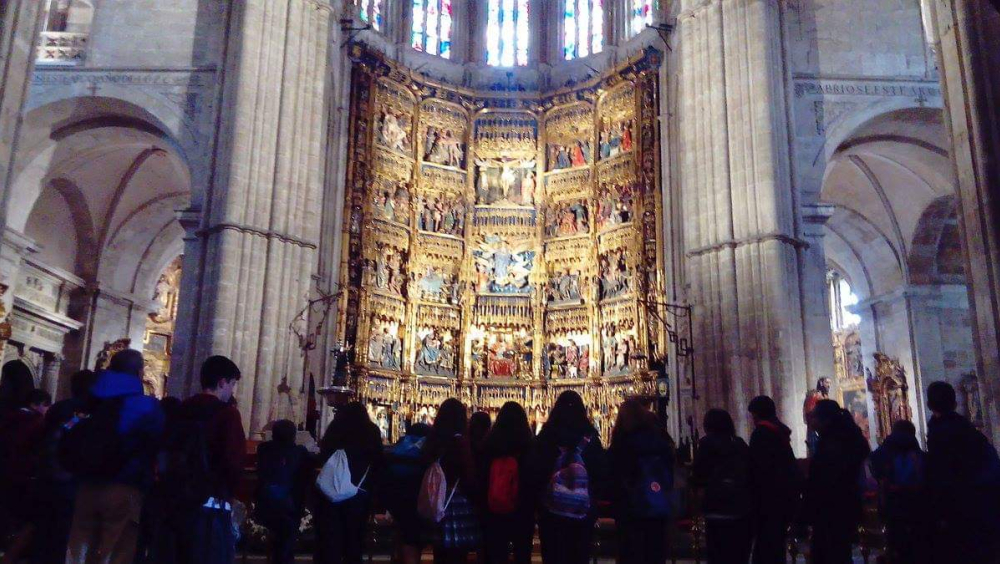IN ITINERE.
Centuries ago, the women and men of this continent have left their cultural legacy on the lands of Europe. The historical ways (land and sea) were the physical links that connected and united the territories, from Prehistory to the present day. The historical itineraries are the ropes that connect all the men and women of Europe with their history. Different heritages, next to the historical roads, have been appearing and disappearing. Assembling territories of an extraordinary cultural variety. And most importantly: connecting with each other. Their traces tell us of an absent and present legacy; a visible and invisible reality: the material and immaterial heritage. From the tangible to the faith. In all this there is also an absence: an absent heritage. All this shapes the trail and footprint of men and women over time: It is the legacy that connects us through the Camino.
The main objective of this program, projected for the European Heritage Days, is to use the Camino de Santiago as an open classroom, a shared resource common to the rest of the cultural itineraries. For this reason, its focus on the non-formal sphere of the educational community is fundamental, where teachers, students and their families will be able to use cultural heritage –material and immaterial– as an educational tool with a dual objective: 1) Knowing and value the tangible and intangible heritage linked to the Camino as it passes through Asturias 2) knowing the importance of protecting and promoting the diversity of different cultural expressions along the entire Camino de Santiago as a European Cultural Itinerary, facing the Jacobean Holy Year 2021. PAMUA. PATRIMONIO, MUSEOS Y ARQUEOLOGÍA, SC. CONTACT: pamua.patrimonio@gmail.com
Centuries ago, the women and men of this continent have left their cultural legacy on the lands of Europe. The historical ways (land and sea) were the physical links that connected and united the territories, from Prehistory to the present day. The historical itineraries are the ropes that connect all the men and women of Europe with their history. Different heritages, next to the historical roads, have been appearing and disappearing. Assembling territories of an extraordinary cultural variety. And most importantly: connecting with each other. Their traces tell us of an absent and present legacy; a visible and invisible reality: the material and immaterial heritage. From the tangible to the faith. In all this there is also an absence: an absent heritage. All this shapes the trail and footprint of men and women over time: It is the legacy that connects us through the Camino. During the celebration of the European Heritage Days (JEP 2020), small educational itineraries will be projected (5 to 10 km long) along the different routes of the Camino de Santiago as it passes through the Principality of Asturias (Camino Primitivo, Camino del Salvador and Camino de la Costa). The objective is to turn the Camino into an open classroom where you can get to know the different cultural heritages as manifestations of a common legacy: the material and intangible heritage of cultural itineraries and historical roads. The itineraries can be developed over 2 or 3 days in different locations (councils of the Principality) and linked to various themes (Pre-Romanesque Asturian, industrial heritage, traditional culture, Roman camps, coastal heritage, etc.) all linked by the cultural itinerary of the Camino de Santiago in Asturias.
